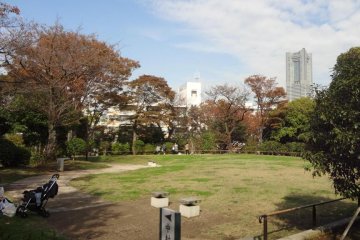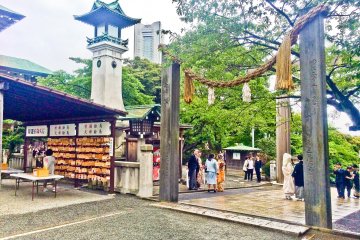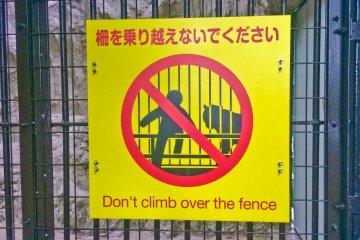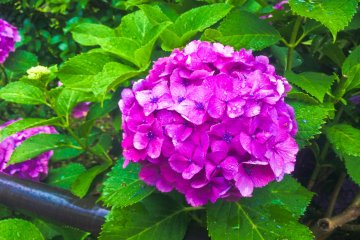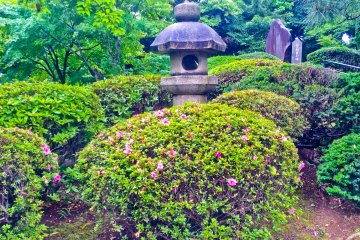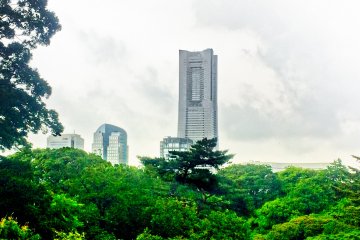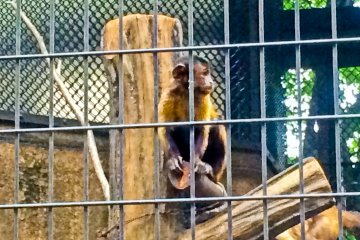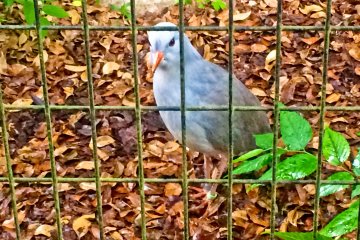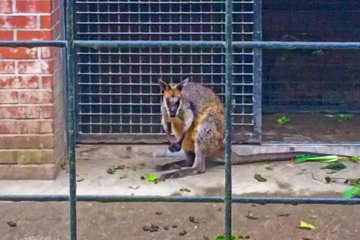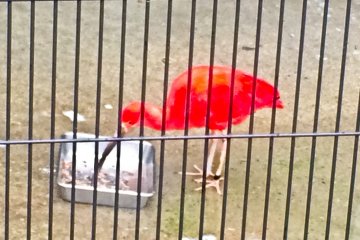Exciting and lively are perhaps just a few words which can be used to describe Yokohama`s constantly changing and evolving Minato Mirai district. With its many impressive sights and countless ultra-modern facilities, Minato Mirai has without doubt, successfully established itself as one of this city’s key tourist spots.
A surprising addition to its list of attractions is Nogeyama Park and Zoo, which despite being just a short walk away from Sakuragicho Station, offer a relaxing contrast to Minato Mirai`s ever bustling and futuristic landscape.
Located on a hilltop in a quiet residential neighborhood, Nogeyama Park is a great place to escape the crowds and enjoy the peaceful greenery and wide open spaces. Despite the fact that it was cloudy when coming here, I was dazzled by the sight of many beautifully colored hydrangeas planted around this park. When walking around it is hard to believe that you are only a few minutes away from one of the liveliest parts of Yokohama.
A short distance away from this park is another interesting place worth visiting, Nogeyama Zoo.
Opened in 1951, Nogeyama was the first zoo to be opened in Yokohama. Covering an area of 24 acres, Nogeyama is the only centrally located Zoo within Yokohama, making it very convenient and easy to access. More importantly, it is perhaps the only Zoo in Japan (or perhaps even the world), that is free!
Unfortunately, because of its age and relatively small size, Nogeyama had somewhat been overshadowed in recent years by more modern and larger zoos like Zoorasia, to the point where many people were no longer coming here. This problem was highlighted about 10 years ago by alarmingly low visitor attendance numbers.
Fortunately, Nogeyama has been able to fight itself out of this predicament by actively initiating a number of improvements including the construction of a new `Nakayoshi` area allowing children to interact freely with smaller animals. Many new programs have also been introduced including a `Night Zoo` during the summer months. Consequently, through this hard work Nogeyama has been able to once again attract larger numbers of visitors.
Because of its compact size, this Zoo makes a nice place to spend several hours wandering around the various enclosures. There are about 100 different species of animals including monkeys, wild cats, birds and several Red Pandas.
Without doubt, the Red Pandas are the star attraction of this zoo and are therefore located close to main entrance, making them the first and last animals that you will see. Having seen a couple of Red Pandas recently at another zoo, I was very impressed by the design of the enclosure which almost (but not quite), allows you to get within touching distance.
Along with the usual array of animals that can be found in many other zoos, are several `Tuften Capuchin`, (a small South American Money). Perhaps it`s because of their cute features or their interesting personalities that I found it hard moving on to the next enclosure.
The next interesting creature which I encountered was a Kagu, (A bird). Indigenous to New Caledonia and a little similar to the New Zealand Kiwi, this was the first time I had seen this bird. Indeed, Nogeyama can boast about being the only zoo in Japan and perhaps one of the few places in the world to host this bird.
On a big downside however, is the undeniable fact that many of the enclosures for the larger animals are ridiculously undersized for these beautiful creatures, who need a significantly larger space to roam around in.
Unfortunately, because of this zoo`s small size, the chances of this happening are very remote. A much more humane option would be to move these bigger animals to somewhere with the appropriate space to accommodate them. Even if this meant having to pay more money to see them this would make a nicer experience for the visitor but much more importantly, for the animals!
By doing this, Nogeyama could then specialize in doing something which it obviously appears good at doing, hosting smaller animals.



